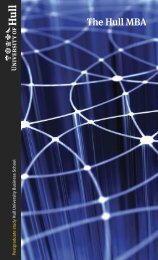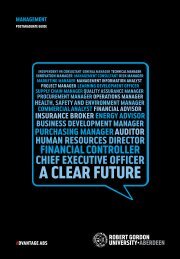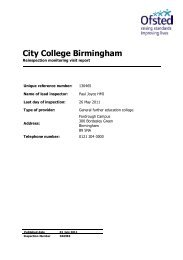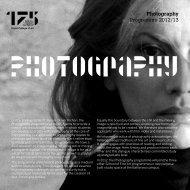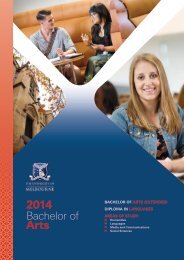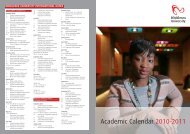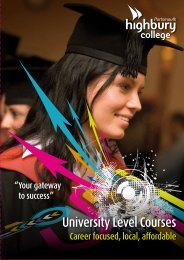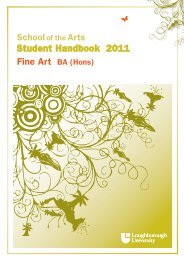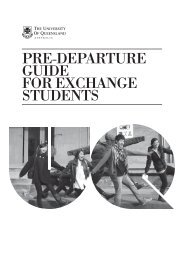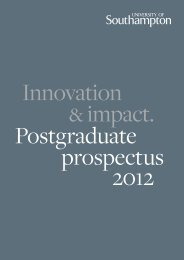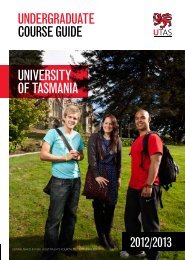The University of Ballarat
The University of Ballarat
The University of Ballarat
Create successful ePaper yourself
Turn your PDF publications into a flip-book with our unique Google optimized e-Paper software.
ACADEMIC CONVENTIONSMuch writing that you do for assessable tasks will require that you acknowledge where the ideas camefrom. <strong>The</strong>re is no great mystery about this, once you learn and practice how it is done.<strong>The</strong> main thing to remember is that in the world <strong>of</strong> scholarship, we don’t steal other people’s ideas. Wecan learn from them, use them and build on them – but we must say whose ideas they were in the firstplace.<strong>The</strong> style guide is provided for your information. A <strong>University</strong> Style Guide is available fromwww.ballarat.edu.au/aasp/student/recruitment/survive/ where it is linked from the title Academic StyleGuidePLAGIARISMPlagiarism occurs when a person uses the words, language or ideas <strong>of</strong> another person and presentsthem as their own. Plagiarism is called cheating when students copy the work <strong>of</strong> other students andpresent it as their own.<strong>The</strong>re are two approaches to avoiding plagiarism:Provide references when you use the work <strong>of</strong> others so that the reader clearly understands where theideas originated;Produce the work yourself.Plagiarism cannot be avoided by copying an author’s work or ideas and putting them in your ownwords. It is the work and the ideas scholars seek to protect.Thus even when you summarise an author’s ideas, you should reference your summary as an indirectquotation.Ideas are your own when they are your own work. This means that you have done the research,generated the ideas, organised the ideas, written them and revised them yourself. In researching, youmay have gathered other people’s ideas into your own work. Where the ideas are identifiable theyshould be acknowledged by references.Note that data, tables, formulas, figures and diagrams produced by others must also be acknowledgedby references. Source: Nouwens, F. 1994, UNILEARN: Successful Study Skills, 2nd edition, UNILEARN,QueenslandETHICS AND TEACHINGA draft Code <strong>of</strong> Ethics has been prepared by the Victorian Institute <strong>of</strong> Teaching. This is available fromVIT at /www.vit.vic.edu.au/Students should be sensitive to the rights <strong>of</strong> parents, students and teachers in their contact withschools. <strong>The</strong>y should apply pr<strong>of</strong>essionalism in terms <strong>of</strong> confidential information they may acquire andin their dealings with others.Photographs <strong>of</strong> students are NOT permitted.Research at the <strong>University</strong> <strong>of</strong> <strong>Ballarat</strong> is informed by the Human Research and Ethics Committee.STYLE GUIDEUB Library has produced a print version <strong>of</strong> the <strong>University</strong>'s Academic Style Guide, available fordownload from the Student Services Web site: www.ballarat.edu.au/aasp/student/recruitment/surviveCOMPUTER RESOURCES AND SERVICESFor the most part, other than areas <strong>of</strong> specialised application, the <strong>University</strong> employs Windows basedcomputers. <strong>The</strong>se are located in laboratories around the <strong>University</strong> and are usually available for studentuse from 8.00 am to 9.00 pm from Monday to Friday. <strong>The</strong> times sometimes change and laboratories maybe booked for a class, so be careful if you are working to a deadline. <strong>The</strong>re are also computers locatedin the Library and these are available whenever the Library is open.22 <strong>of</strong> 28



